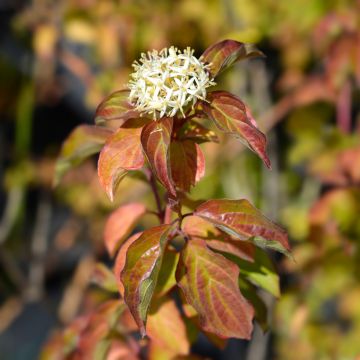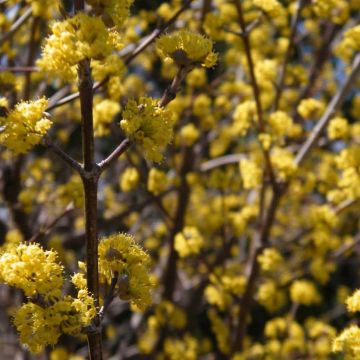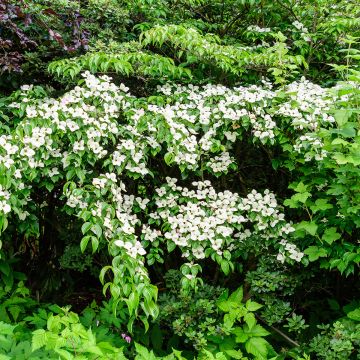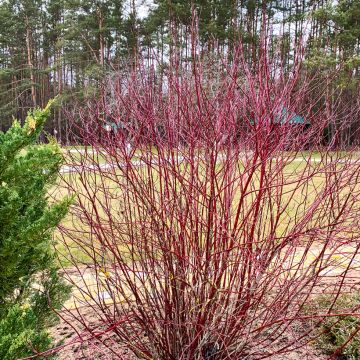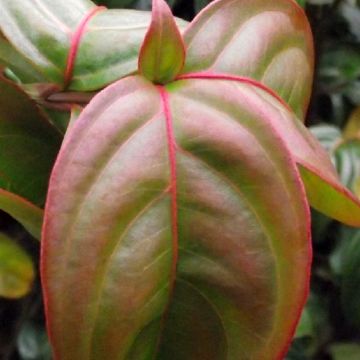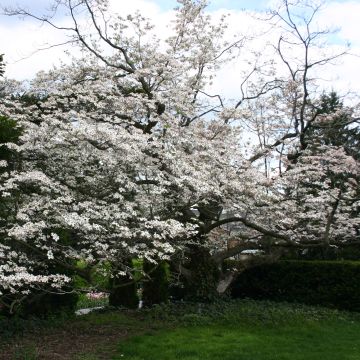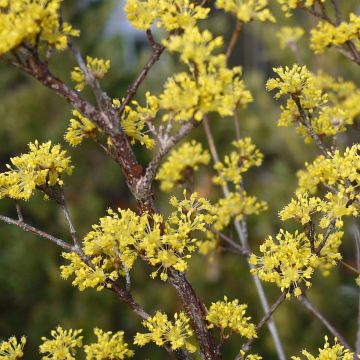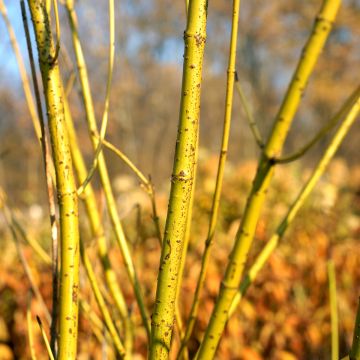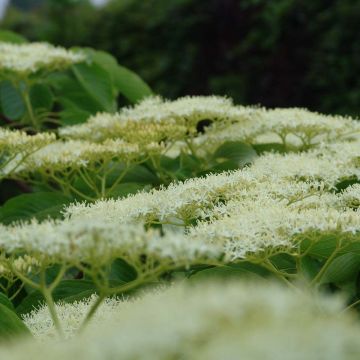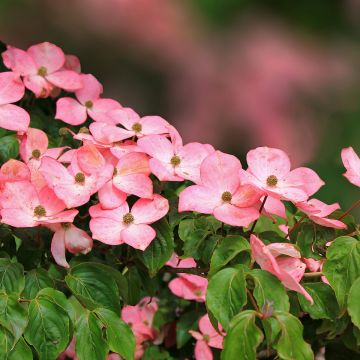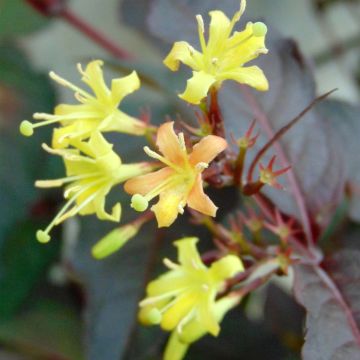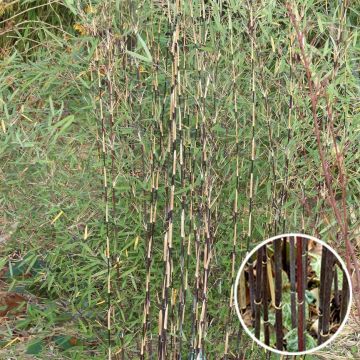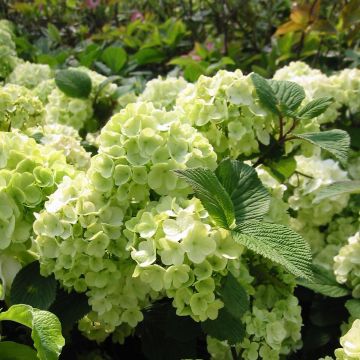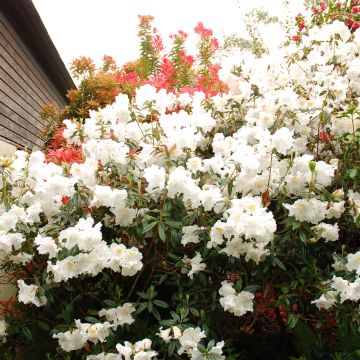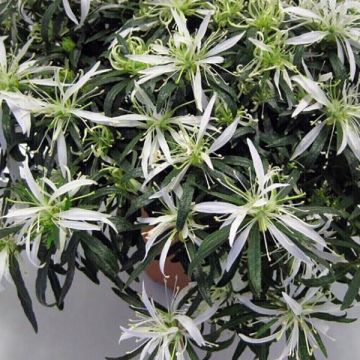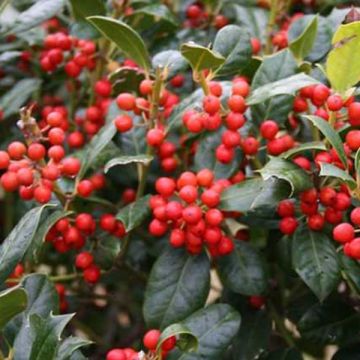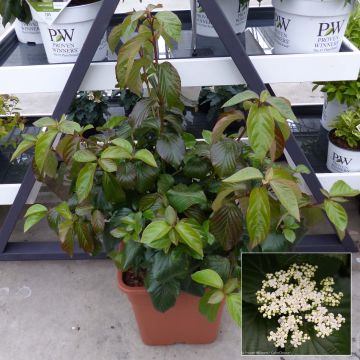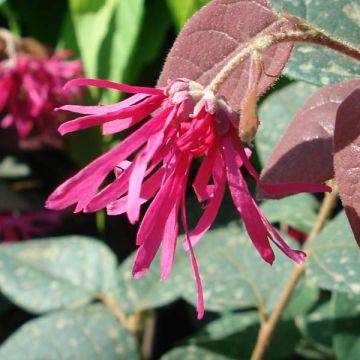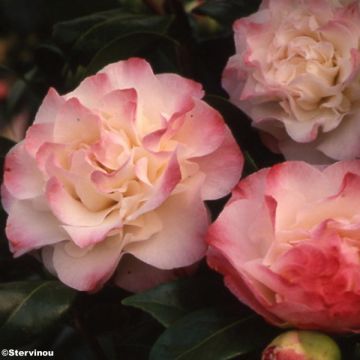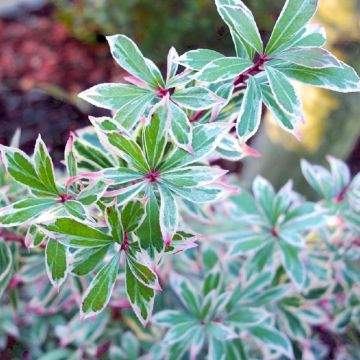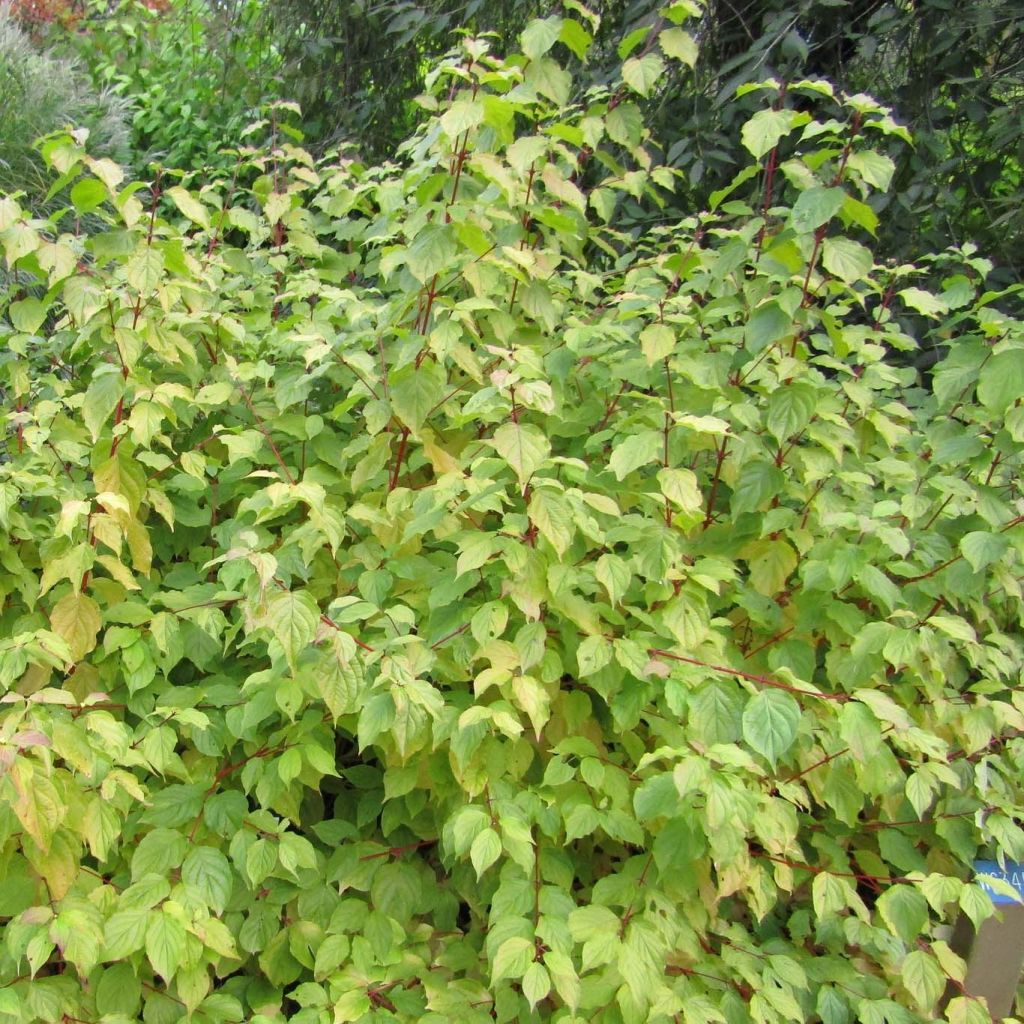

Cornus sanguinea Annys Winter Orange - Common Dogwood
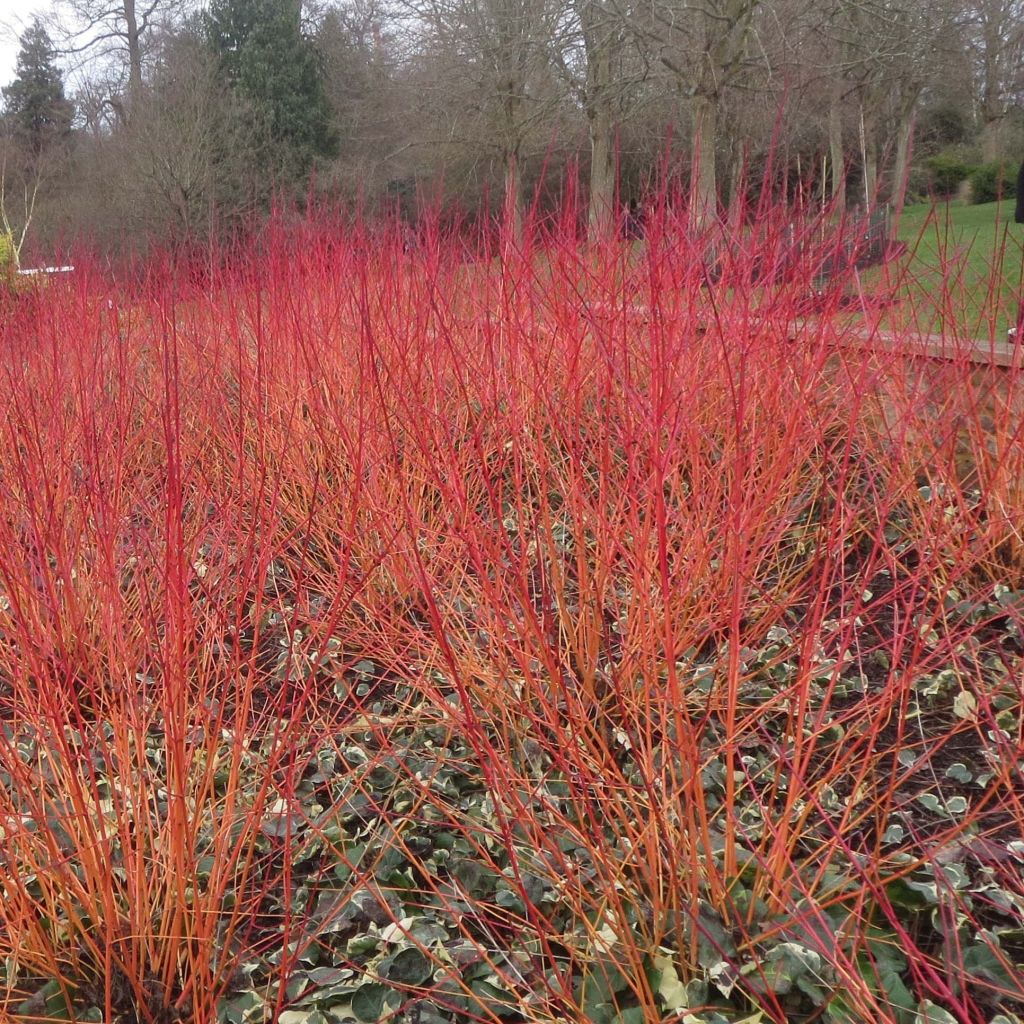

Cornus sanguinea Annys Winter Orange - Common Dogwood
Cornus sanguinea Annys Winter Orange - Common Dogwood
Cornus sanguinea Anny's Winter Orange
Common Dogwood, Bloodtwig Dogwood, European Dogwood, Swida sanguinea
This item cannot be shipped to the selected country
Delivery charge from €5.90
Delivery charge from €5.90
More information
Schedule delivery date,
and select date in basket
This plant carries a 24 months recovery warranty
More information
We guarantee the quality of our plants for a full growing cycle, and will replace at our expense any plant that fails to recover under normal climatic and planting conditions.
From €5.90 for pickup delivery and €6.90 for home delivery
Express home delivery from €8.90.
From €5.90 for pickup delivery and €6.90 for home delivery
Express home delivery from €8.90.
Does this plant fit my garden?
Set up your Plantfit profile →
Description
The Cornus sanguinea 'Anny's Winter Orange' forms a small bushy shrub that is particularly decorative in autumn and winter when its foliage and then its wood take on fiery colours. At the end of the season, its deciduous foliage turns light green before turning orange and silver in November. Its bare branches then turn yellow at the base, orange as they rise, and lastly bright red at their tips. Perfectly hardy, native, and easy to grow, it will brighten up your garden when it is at its least colourful. Plant it in groups in flowerbeds to create depth, or plant it as a hedge or as a standalone plant in front of light to highlight its bark. It can be planted in any type of well-drained soil.
The Cornus sanguinea, from the Cornaceae family, which is known by different names depending on the region such as Female Cornel, White Wood, Bloody Wood, or even Norman Olive, is a deciduous shrub found throughout Europe. It is native to a large part of Europe and eastern Asia. As ubiquitous as it is ornamental, it has long attracted the attention of horticulturists. The Cornus sanguinea 'Anny's Winter Orange' is a Dutch horticultural creation from 1995, selected for the gradients of yellow, orange, and bright red of its winter wood. Of medium growth, it has a bushy habit with a spreading tuft as tall as it is wide. On maturity, it will reach an average of 2 m (6 ft 7 in) in all directions after 10 years unless it is pruned regularly nearly down to the ground. When pruned regularly, it will not exceed 1.50 m (4 ft 11 in) to 1.80 m (5 ft 11 in) in height. This routine will promote the growth of young branches which will be much more colourful than old stems. The foliage consists of full, elliptical to ovate-shaped leaves with pointed tips and a somewhat soft, glossy green colour. They take on beautiful shades of light green, orange, and eventually silver before dropping off in winter. Flowering takes place in May-June. The tiny white, slightly fragrant flowers are gathered in flat-topped corymbs at the ends of the young shoots. After pollination by pollinating insects, they give way to clusters of small round, initially green, then red, becoming dark purple berries in summer. They delight birds, which in turn spread the seeds.
Truly undemanding in terms of soil type and exposure, the Cornus sanguinea 'Anny's Winter Orange' is easy to maintain and extremely decorative in winter. It can be planted as a standalone plant in the centre of perennial flowerbeds, in mixed hedges, or to create spectacular large borders in front of taller shrubs. Its autumn colours blend beautifully with the flowering of asters and its coloured wood brings life to the dark green or blue foliage of conifers in winter. It can also blend well with clematis, which provide it with lovely summer blooms whilst allowing it to fully express itself in winter.
Report an error about the product description
Cornus sanguinea Annys Winter Orange - Common Dogwood in pictures
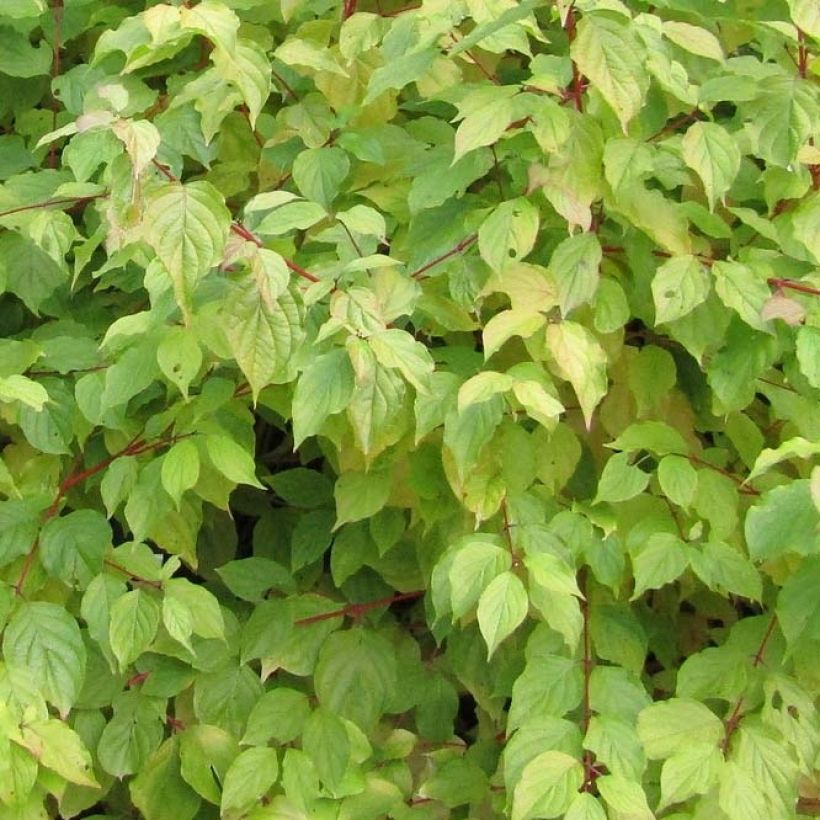

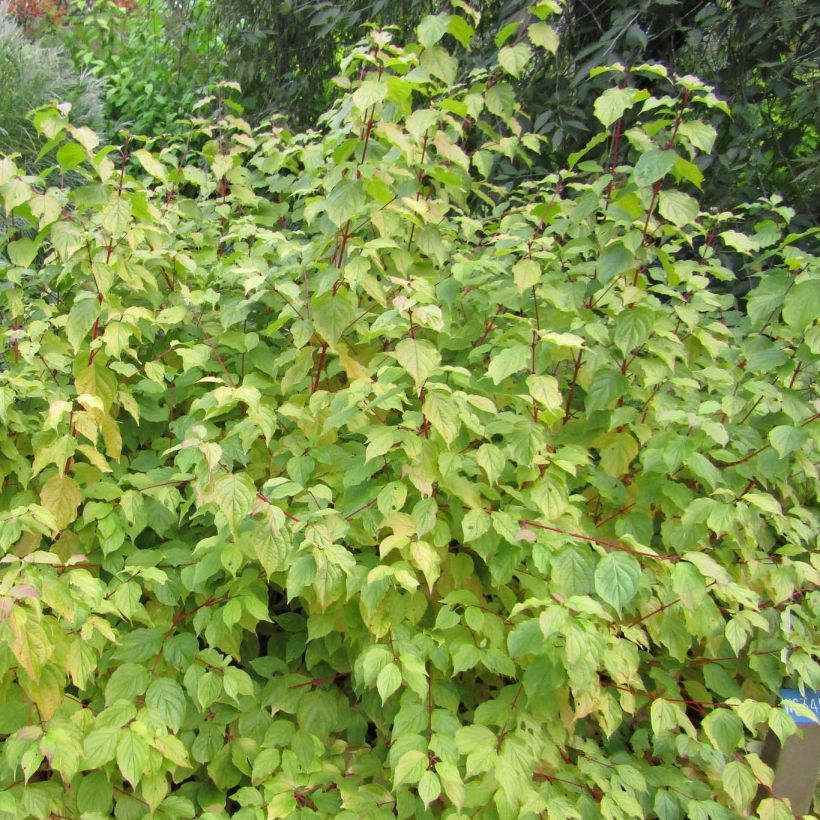

Plant habit
Flowering
Foliage
Botanical data
Cornus
sanguinea
Anny's Winter Orange
Cornaceae
Common Dogwood, Bloodtwig Dogwood, European Dogwood, Swida sanguinea
Cultivar or hybrid
Other Cornus
Planting and care
Plant the Cornus sanguinea 'Anny's Winter Orange' in spring or autumn, preferably in a sunny location or in partial shade in hot climates. While this bush is relatively tolerant to shade, its growth will be significantly slowed down in dense shade. It is adaptable to any soil type and is highly tolerant of even substantial volumes of limestone. Plant it in deep and well-drained soil to help it establish, and follow the watering instructions during the first two or three years, especially in hot and dry weather. Its hardiness is around -15°C (5 °F). Although it thrives in poor soil, and the sue of fertilisers is of limited benefit, adding a good organic fertiliser such as crushed horn to the bottom of the planting hole will help the bush to get off to a good start.
Planting period
Intended location
Care
This item has not been reviewed yet - be the first to leave a review about it.
Shrubs for semi-shade
Haven't found what you were looking for?
Hardiness is the lowest winter temperature a plant can endure without suffering serious damage or even dying. However, hardiness is affected by location (a sheltered area, such as a patio), protection (winter cover) and soil type (hardiness is improved by well-drained soil).

Photo Sharing Terms & Conditions
In order to encourage gardeners to interact and share their experiences, Promesse de fleurs offers various media enabling content to be uploaded onto its Site - in particular via the ‘Photo sharing’ module.
The User agrees to refrain from:
- Posting any content that is illegal, prejudicial, insulting, racist, inciteful to hatred, revisionist, contrary to public decency, that infringes on privacy or on the privacy rights of third parties, in particular the publicity rights of persons and goods, intellectual property rights, or the right to privacy.
- Submitting content on behalf of a third party;
- Impersonate the identity of a third party and/or publish any personal information about a third party;
In general, the User undertakes to refrain from any unethical behaviour.
All Content (in particular text, comments, files, images, photos, videos, creative works, etc.), which may be subject to property or intellectual property rights, image or other private rights, shall remain the property of the User, subject to the limited rights granted by the terms of the licence granted by Promesse de fleurs as stated below. Users are at liberty to publish or not to publish such Content on the Site, notably via the ‘Photo Sharing’ facility, and accept that this Content shall be made public and freely accessible, notably on the Internet.
Users further acknowledge, undertake to have ,and guarantee that they hold all necessary rights and permissions to publish such material on the Site, in particular with regard to the legislation in force pertaining to any privacy, property, intellectual property, image, or contractual rights, or rights of any other nature. By publishing such Content on the Site, Users acknowledge accepting full liability as publishers of the Content within the meaning of the law, and grant Promesse de fleurs, free of charge, an inclusive, worldwide licence for the said Content for the entire duration of its publication, including all reproduction, representation, up/downloading, displaying, performing, transmission, and storage rights.
Users also grant permission for their name to be linked to the Content and accept that this link may not always be made available.
By engaging in posting material, Users consent to their Content becoming automatically accessible on the Internet, in particular on other sites and/or blogs and/or web pages of the Promesse de fleurs site, including in particular social pages and the Promesse de fleurs catalogue.
Users may secure the removal of entrusted content free of charge by issuing a simple request via our contact form.
The flowering period indicated on our website applies to countries and regions located in USDA zone 8 (France, the United Kingdom, Ireland, the Netherlands, etc.)
It will vary according to where you live:
- In zones 9 to 10 (Italy, Spain, Greece, etc.), flowering will occur about 2 to 4 weeks earlier.
- In zones 6 to 7 (Germany, Poland, Slovenia, and lower mountainous regions), flowering will be delayed by 2 to 3 weeks.
- In zone 5 (Central Europe, Scandinavia), blooming will be delayed by 3 to 5 weeks.
In temperate climates, pruning of spring-flowering shrubs (forsythia, spireas, etc.) should be done just after flowering.
Pruning of summer-flowering shrubs (Indian Lilac, Perovskia, etc.) can be done in winter or spring.
In cold regions as well as with frost-sensitive plants, avoid pruning too early when severe frosts may still occur.
The planting period indicated on our website applies to countries and regions located in USDA zone 8 (France, United Kingdom, Ireland, Netherlands).
It will vary according to where you live:
- In Mediterranean zones (Marseille, Madrid, Milan, etc.), autumn and winter are the best planting periods.
- In continental zones (Strasbourg, Munich, Vienna, etc.), delay planting by 2 to 3 weeks in spring and bring it forward by 2 to 4 weeks in autumn.
- In mountainous regions (the Alps, Pyrenees, Carpathians, etc.), it is best to plant in late spring (May-June) or late summer (August-September).
The harvesting period indicated on our website applies to countries and regions in USDA zone 8 (France, England, Ireland, the Netherlands).
In colder areas (Scandinavia, Poland, Austria...) fruit and vegetable harvests are likely to be delayed by 3-4 weeks.
In warmer areas (Italy, Spain, Greece, etc.), harvesting will probably take place earlier, depending on weather conditions.
The sowing periods indicated on our website apply to countries and regions within USDA Zone 8 (France, UK, Ireland, Netherlands).
In colder areas (Scandinavia, Poland, Austria...), delay any outdoor sowing by 3-4 weeks, or sow under glass.
In warmer climes (Italy, Spain, Greece, etc.), bring outdoor sowing forward by a few weeks.

































